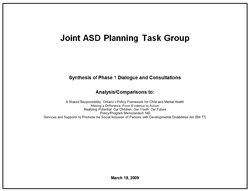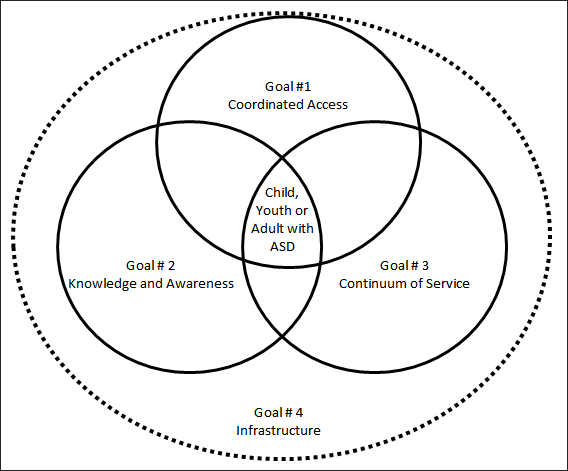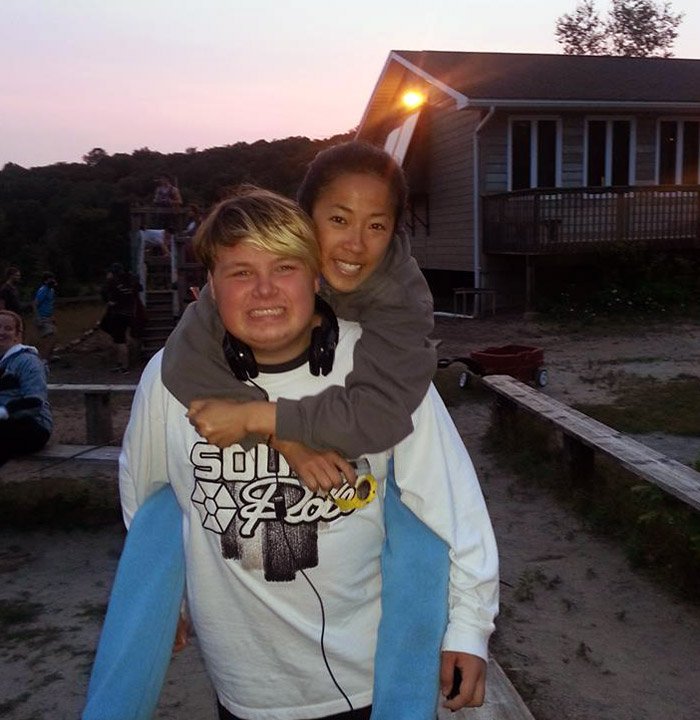Parents are actually part of the process —
we aren’t just an afterthought.
The group needed to create a seamless system of support for children, youth, and adults with ASD and their families. They needed to find a way to organize everyone and the work. This became a question of governance – who, what and how?
York Region had a long history of various parent and service provider groups forming to support families with children with special needs – but they often lacked stable resources to support their work in a sustainable way. Government programs and priorities were always in flux and a never-ending pursuit of funding by both volunteer and professional groups resulted in a patch-work of committees and coordinating bodies.

In 2008, after several months of discussion, a partnership between the York Dual Diagnosis/ASD Service System Working Group and the local chapter of Autism Ontario was formed.
Establishing a formal partnership between disparate groups can be challenging but fortunately the York Region Advisory Forum on Children, Youth and Families, with its credibility and broad membership, actively endorsed and championed the move towards a formal partnership.
The effort gained momentum as the two local school boards, the newly established Children’s Treatment Network and the provincial Ministry of Children and Youth Services (MCYS) recognized that a coordinated model of service delivery would help them achieve their goals while better serving children, youth, and adults with ASD and their families in York Region.
With seed funding provided by MCYS and contributions from partner agencies, a specially formed Joint ASD Planning Task Group hired a consultant to guide the process “to develop a specific, measurable and action-oriented strategic plan for all stakeholders in the system of support for children, youth and adults with ASD and their families in York Region.”

As a first step in mapping the way, an environmental scan consisting of key informant interviews and a review of recent policy documents was completed by the consultant.
 Download Synthesis of Phase 1
Download Synthesis of Phase 1
Dialogue and Consultations
The next task was to develop a common understanding of what the current system of support looked like. As outlined in Chapter 3: Getting Everyone on the Same Page, it proved to be more challenging than expected.
The next task was to bring everyone together to discuss their hopes and expectations of a new system of support. In Chapter 2: Getting Started, you can see flyers and a registration form for the two Community Planning Days that were held for this purpose.
After the meetings, the aspirations of the participants were grouped into five themes:
1. Access: Any door leads families to the appropriate resource and action for their child.
2. Evidence-based Practices: Knowledge, training and awareness.
3. Coordinated Plans of Care: Individualized plans and Single Plan of Care (SPOC).
4. Partnering and Accountability: Sustainable, resourced infrastructure for planning.
5. Continuum of Services: Everyone gets what they need when they need it.
Now the Joint ASD Planning Task Group needed to begin mapping the way forward. They started by developing a logic model to describe the various components of a new system under each of the five theme areas. This logic model became the basis for a Strategic Plan which the Implementation Group, a specially formed sub-committee of the Joint ASD Planning Task Group, had the responsibility for developing.
The Implementation Group began by refining the theme areas from the Community Planning Days and logic model into four overarching goals. Three goals were targeted at directly improving programs and services while the fourth goal focussed on building a sustainable infrastructure so that the work could continue over the longer term in a collaborative way. Always at the core of the collaborative work were children, youth, and adults with ASD.
The four goals of the strategic plan were illustrated as per the diagram.


Strategic actions were developed for each of the four goal areas. In total, ten broad strategies were identified and 46 strategic actions detailed. While each strategic action addressed a specific issue, they all complemented and overlapped with each other.
When finally completed, the Strategic Plan included:
In April 2010 the parents and partners who had come together to form the Joint ASD Planning Task Group approved and recommended the adoption of the Strategic Plan.
Families of children, youth, and adults with ASD in York Region and the network of professionals who served them now had a common and shared map for moving forward.